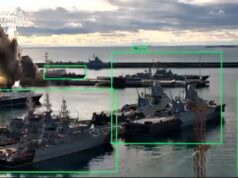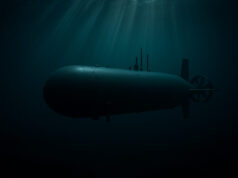In response to a question from the Shadow Secretary of State for Defence, John Healey MP, regarding the funding and procurement process for the Multi Role Support Ship (MRSS), James Cartlidge, Minister of State for the Ministry of Defence, provided the following written statement.
The statement reads.
“Funding for the concept phase of the Multi Role Support Ship (MRSS) has been approved by HM Treasury. I can confirm that the platform will be procured through the new Integrated Procurement Model (IPM), which I recently announced. As such, the next step in the programme will be for me to receive and review the Independent Advice Note (IAN) on MRSS which will inform the concept and design phases of the programme. As I said in my Oral Statement of 28th February, announcing the IPM, the aim of this note is ‘to provide a credible second opinion for Ministers to weigh alongside the military’s proposed requirement’ (Hansard ref).
The IAN will provide advice on key policy choices, to ensure we set the programme up for success from the off. In particular, this is to ensure core policy issues are transparently considered at the earliest stage, and then locked down as far as possible, so that the remaining procurement stages can proceed at pace, and in a context of underlying policy certainty. Policy areas to be informed by the IAN will include:
- Industrial options, to be supplemented by in-depth engagement with industry;
- Exportability, enabling any related campaigns to commence at the earliest opportunity, and providing transparency over any potential mismatch between domestic and international market requirements;
- Full cost transparency, including the likely cost of associated and dependent enablers; and
- Technological considerations, informed by wargaming and other evidence.
Advice would draw on expertise from across the Defence Enterprise, including, but not restricted to: DSTL; DE&S; DSE/DBT.
The total programme budget will be allocated on completion of the concept phase. It is too early in that process to have committed expenditure or actual spend.
MRSS will enter service in the early 2030s, providing highly flexible warships, able to deploy on a wider variety of operations. They will be lean-crewed, with the precise crew requirement being confirmed during the concept phase.”













‘Advice would draw on expertise from across the Defence Enterprise, including, but not restricted to: DSTL; DE&S; DSE/DBT.’ How about consulting the Royal Navy and Royal Marines???
The military requirement is set by the RN and RM via MOD as now, however the idea of the IAN is to ensure that wider issues like how do we use procurement to improve industrial capacity? can it be exported? is it affordable? and have MOD considered all the emerging tech options? are considered.
The idea is that this prevents tears later in the programme that can result in delays, rescoping, early obsolescence and cost escalation, and strengthens the industrial base.
Good comeback..
Thx that’s what I would have presumed but good to have it confirmed.
When I served on the DLG Hms London we hosted a class of future Naval architects they never seemed too ask Nuts and Bolts questions about ease and reliability of machinery spaces ,weapon systems and general accomadation it was a time when should ships be built Long and thin or stubby and broad most of them became seasick
Long thin vs short fat – remember the arguments well.
There’s probably a filling cabinet in Whitehall full of non scientific crayon drawings from the 70ts now consigned to the National archives waiting for future generations too have a laugh at
Wasn’t the short fat proposition (ostensibly if I remember correctly for better weapon fit et al or is it fitted for more weapon fit lol) originated by Vospers?
RN we’re obsessed with speed but length does have some DC advantages.
Others were more interested in platform stability, more space for systems, structural strength, lower build cost, better crew accommodation…..
😁👍
How about asking the RFA as they have operated LST’s, LSLs and LSDA’s over more that 60 years and have kept Britain,s amphib capability going when LPD’s are laid up or just not available??
Let’s hope they did that before then going on to help define through this process how best to provide it, after all the RFA can’t actually design and build whatever parameters, concepts and ideas are initially laid out. Understandable that an element of cynicism creeps in mind.
Yes, quite right too.
Finally we’re getting something right, using investment in armed forces to create product we can sell. Hopefully this sort of thinking will survive a change in government.
I mean exportability isn’t always a good thing and can drag down your own requirements. Plus I’m not sure who’s going to need a vessel like this that wouldn’t build their own.
You could say the same of Norway and T26?
Well yeh I’d say Norway isn’t getting everything it needs in T26, at least when looking in comparison to its current vessels. Obviously there’s a chance T26 looses so well see.
As we see with Canada and Australia it’s not one size fits all it’s a base from which to feed into others requirements. Thereafter cost in doing base and adaptation as a final design that is the major deciding factor.
It’s not necessarily this vessel its the thinking behind the whole process. If we’d taken this approach with projects link Nimrod MRA4 we could have been exporting MPA aircraft instead of buying US airframes.
Agreed
What isn’t clear to me is if anyone has done the economics on building for export.
The current model is selling the design, but built abroad, so marginal revenue back to the treasury. To balance that there is an increased cost in development because export requirements have to be built in on top of uk ones. Additionally it slows things down which adds to cost.
Does the tax payer come up on top or is it just the shareholders of the defence companies that are majority overseas that gain.
Depends on the equipment, your applying this to ships but take it apply it to say a jet trainer. Certainly you get nothing if you don’t even attempt to understand the export market. The recent report on the Eurofighter shows good economic benefits from exports.
And on vessels a lot of the money is in the sub systems the steel bashing is the cheap bit.
So as a policy for procurement I think it’s a positive step. We don’t always have design for export but if there’s alignment on a very large % of requirement then why not go for it.
Yeah it’s case by case, but really the goverment should publish an economic assessment. Let’s face it most of our stuff fails on the export market and under that scenario we have potentially paid more resulting in further cuts elsewhere for no benefit.
Governments just like talking about exports, whether it’s a positive export or not doesn’t matter.
Most of our stuff fails in export because we gold plate it with niche requirements. It then becomes too expensive and late into service and at times we’ve just given up and bought foreign. Prime example Nimrod. Even a superficial examination of Nimrod MRA4 tells us had we put export as a criteria we would never have used old airframes and opted for an in production airframe. Would saved billions and had we used Aurbus airframe European countries would be buying our MPA instead of Boeing.
But again it’s about asking the question upfront, does this product have an export market if no then ignore if yes how close are we to a saleable product without compromising, what’s the export market size, if its small then ignore. Its not a binary yes or no it’s a process.
Even if you are talking about ships, all the Type 26’s are being built with Rolls Royce Gas Turbines, that means even though all RCN and RAN Type 26’s are being built in their home countries, RR will build 29 MTU30’s, instead of 8 (34 if Norway buys 5 Type 26’s)
Plus all the gearboxes and motors, both high value UK manufactured components. Will keep these valuable industrial capabilities going for a good while.
Surely by considering such matters before the expensive part starts you can consider and design in flexibility that can open it up to export without (if it’s done well) compromising in any significant way the product for the home market. As a designer that’s what we do where relevant at least but Britain generally has been very singular about which has damaged us and left us ironically in many cases having to buy foreign designs that were never designed for us as an initial consideration. Did it hurt the Juan Carlos design? Clearly now Babcock consider an important part of its business to design (or redesign) ships that it sees have export potential, so clearly it feels that export business built elsewhere is a vital ingredient. What people forget is that it’s usually the ongoing support and infrastructure not to mention doors into further such business down the line by reliance upon it, that brings in the profits even if the profit on its foreign built ships might not come to much. Lateral thinking is required that has worked well for Navantia around the World and many others and why the French have been so successful at selling products.
Certainly not taking such matters into consideration has long been argued (and is difficult to contradict in all honesty) that was the major factor in the decline and fall of so much of our defence industry certainly when partnered with a lack of planned continuous renewal production matters. May have worked when we were a great power but those involved clearly didn’t fully comprehend the impossibility (in most circumstances) of continuing it when we were not and defence procurement becoming far more expensive and numbers far reduced. But then that has been typical of UK PLC generally over the post war decades.
It certainly won’t apply to every product but we still have some export potential throughout our defence industry. Certainly the more complex products are more difficult to determine if they have export potential. We have a history of chucking billions at niche products, some have failed to even make it into service but may have if we’d asked do we think the end product could be exported ,cough Nimrod MRA4.
Umm…er…one question please: Which British shipyard(s) will build MRSS by the early 2030s, given current workloads and commitments? If feasible, can direct you toward a large potential market across the Pond. 🤔
Which market would that be.
US, probably via BAES.
Why would the US need these. They got tond of amphibs
Not a cats chance of hell will we be building LPD or any other warships for the US. HLL would go nuclear along with the unions and coalitions of elected politicians for one. Your design process would have to be USN and USMC requirements constrained. For instance just one example. Your dock would have to be LCAC compatible.
Pretty sure he meant the US building amphibs for us, not the other way round.
Why are you calling H&W a scam? We have to invest to rebuild shipyards that have essentially shut down. And that will cost alot.
I’d just say I think that when talking about H&W we need to be clear, the H&W yard is quite simply the optimum facility to build large ships such as FSS, MRSS or eventually QE replacements.
It’s owned by H&W Holdings and the way they have this financed is more than slightly uninspiring (I’m being polite). They bought the Belfast Yard and then Appledore and for some reason the 2 other Scottish Yards, they did this without a single shipbuilding contract in place.
IMHO I’d let the Holding company fold and bring the Belfast Yard and Appledore back into public ownership, but appoint BAe or Babcock to manage it back into health.
That Yard in Belfast is an asset we just can’t let go to the wall.
I don’t see them nationalising any of those yards. They may just cancel FSSS as is and start the whole process again for different yards, if Belfast collapses.
The T32 and MRSS assembly could happen at Rosyth. The T32 does not need the dry docks.
Isn’t the dry docks for Faslane?
The floating dry docks are a different program
You need somewhere to construct the sections of the MRSS though that isn’t in the open. Plus the bigger issue is availability of the main dry dock.
Thats perfectly true and thats the jigsaw that needs sorting. In essence the MRSS wherever they are final assembled will have major sections made across the UK (and maybe overseas like the SSS) just like the carriers were put togther. They are big ships and such splitting of the construction work will be neccessary anyway and fit in with the NSB approach to ensure best employment across the UK
It would lack the workforce for both.
T32 but MRSS is an absolute no no, it cannot be accommodated in either of the 2 Large drydocks as they are already allocated to other work.
Jim it cannot be be Rosyth, the QE builds were a one off Political Shoe in and as No1 Dock has to be kept free 24/7/365 for the QEs and No2 is allocated to de fuelling the old SSN/SSBN and has £400 million of investment going on the get it ready to decommission (scrap them) there’s no where to build MRSS.
Sorry but given its got all the ideal facilities (which we Tax payers funded) it has to be Belfast and IMHO preferably not under the management of H&W holdings.
Does the U.K. actually have a contract with Roysth that they can’t use their large dry dock for any purpose other than having it sitting waiting for a carrier? That would cost a fortune to keep all the staff waiting for a carrier.
Also that number 2 dock also will be doing submarine work non stop for the next 10 years?
Genuinely I don’t know
Longer than 10 years I imagine. There’s 6-7 subs to be dismantled in Rosyth.
But there is a support contract with Babcock for the carriers and they have to be able to provide a dock when it’s needed. So it limits construction options.
https://www.babcockinternational.com/news/babcock-awarded-10-year-contract-for-hms-queen-elizabeth-class-aircraft-carriers-dockings/
You can’y help yourself Jim can you? Another dig over very ggod news just because the “wrong” party in your eyes announced it. Give it a rest mate. Just vote on 4th July.😔
There are seven yards that can build them, and three more that can build blocks to be assembled elsewhere.
BAe Govan, Scotstoun and Portsmouth, Babcock Rosyth and Devonport, A&P Tyneside and Falmouth, CL Birkenhead, H&W Belfast, Ferguson Port Glasgow and Gibdock Gibraltar all have yards with building docks big enough for assembly. H&W’s yards at Appledore, Arnish and Methil can all fabricate blocks for assembly elsewhere.
There is also ship repair capacity that would require new investment to begin shipbuilding again on Teeside, at Hartlepool, Greenock, at Barrow, Galloway and Hull.
And where will it be built? Odds on the argument of necessity outweighing the need to resurrect and support UK industrial capacity will be trotted out.
Sorry, this gets up my 🐐 a bit. Hope BMT fix the rear phalanx in above image. Its firing arc seems severely constricted by the two bulky exhaust stacks. Can they extend the upper flyco deck out a tad or shrink or move the stacks forward?
Is it just me or am I stupid. “Highly flexible warships” from that comment they seem to be RN ships so not replacements for the Bays which are RFA and not warships. This would also mean that they must be built in the UK. BMT Ellida type ships could in theory be built anywhere and fitted out in the UK as they are nothing more than bigish transports. However, that one comment from James Cartlidge seems to me to suggest that the Steller Fearless concept might be on the cards.
Or is it the case that the Minister of State does not know the diffrence between a warship, an amphibious ship and a transport vessel.
The date of when they are to enter service is also of interest, early 2030s. H&W will have their hands full with FSS, BAE would be winding down the T26 program but hopefully if HMG get their act together starting the T83 program. Unless of course we order two or three more T26s to keep the yard operational whilst HMG sort out the T83. That 3would not be a bad thing. That leaves Babcock as they would have completed the T31 program by 2027-28. So again it could be that the T32 and MRSS gets roled into one and that we get something like Babcocks stretched T31 concept, Damen Crossover idea or the Steller Fearless design. There is of course CL but to have four ship yards operational whilst it would be nice we just do not have the orders to keep them going so in the end all would go bust.
So is it possible that someone could ask James Cartlidge what does he mean with his “highly flexible warship” comment as it give mean the impression of a ship that has shooty bang sticks but able to do other things.
The point of a Concept phase is to answer questions like this.
I suspect Mr Cartlidge’s mind will be elsewhere and what it all means will be reinterpreted by the incoming government in due course. Given the number of Conservative MPs standing down, even if a miracle occurs and Mr Sunak leads the Tories to an election victory, Mr Cartlidge would be moving upwards and sideways and his opinion as to how fighty MRSS should be will be no more than a memory.
Do t know the answer to this but there has been a lot of pressure on both parties to build these type of ships in the UK as and wherever possible. Even classification as to what constitutes a warship has been part of the argument. At the very least has made it more tricky to have them built abroad.
Get on with it.
Nice if Putin & Xi refrain from aggression until we’re ready in the early 2030s.
I doubt we’ve got that long & now we’re at our weakest in 100s of years is the time to attack us. That’s the real peace dividend reality. Tories cut away at the state for years, then claim everything is fine & dandy despite being hopelessly weak.
Part of the ministerial statement refers to ‘highly flexible warships’. However, the computer image looks very much like an RFA vessel to me.
Are we now at a point where the number of RN vessels is going down while the number of RFA vessels is going up?
I mean the image is just a concept made by BMT, we’ve no actual idea what MRSS will look like
And the back end needs some rework. The current firing arc of the rear Phalanx looks like it could potentially shoot the exhaust stacks and needs to come out a bit more and maybe the stacks pushed forward.